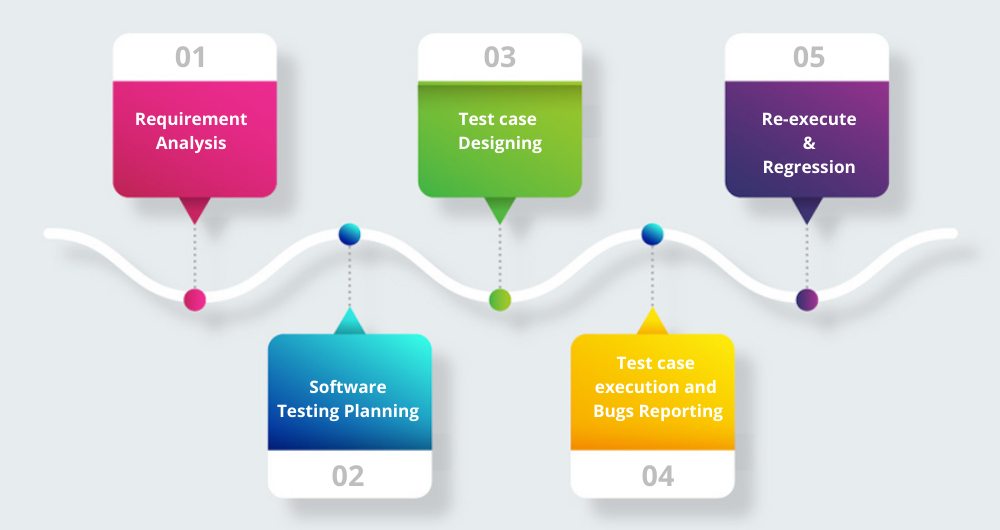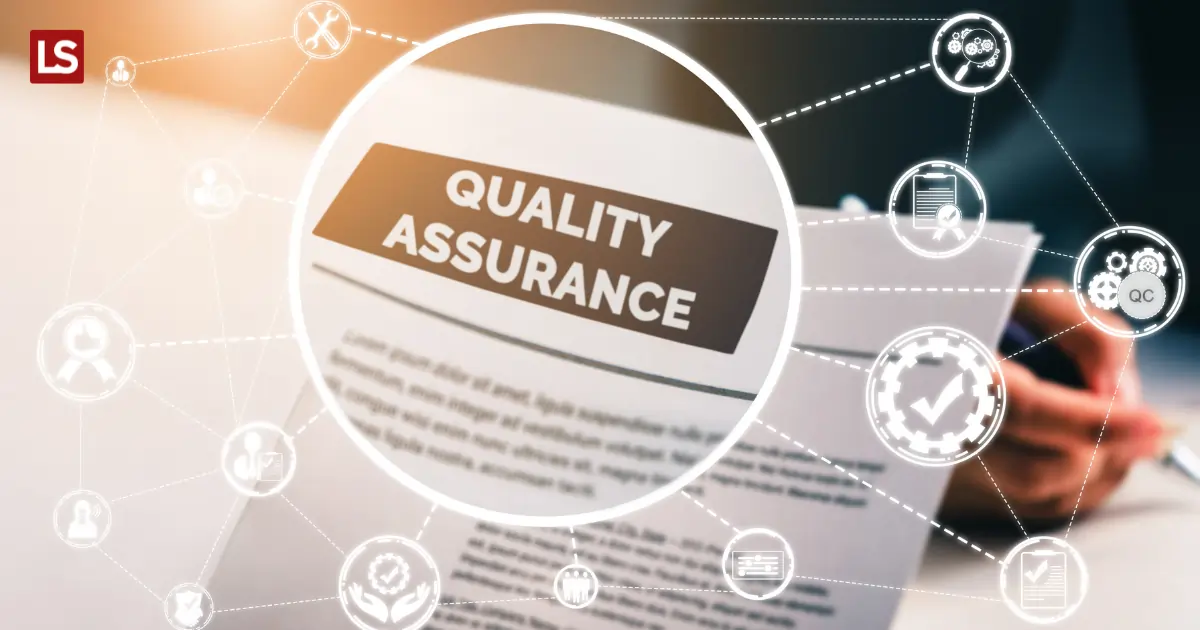Before learning about Quality Assurance (QA), you must learn about Quality and Assurance. Quality means fit for use. In simple words, quality is all about meeting customers’ needs and expectations concerning function, reliability, durability, and design of the product or service. Whereas Assurance is providing a guarantee that the product or service doesn’t have any issue and will work well. QA helps a company to create products or services that satisfy customers’ expectations and requirements.
Today, it has become very essential for companies to have a team of QA that keeps an eye on the entire process of developing a product right from its design to delivering the final product to the customer. It is a way of eliminating defects and mistakes in manufactured products.
It yields high-quality product offerings that build loyalty and trust with customers, thus ending up having long-term employee-customer relationships.
To provide customers with a perfect output, companies now emphasize the quality of the product and for that, they have a qualified QA team that evaluates the design and development needs of the products in order to enhance client confidence, company credibility, and the ability to thrive in a competitive environment.
QA process is a methodology of systematic structured testing that ensures the excellence of a product or service. This helps in the reduction of problems and errors in the final product.
Different Stages in QA Process
Quality Assurance is a need of hours, so it should start early in the product development life cycle as it requires the product to go through different stages that are mentioned below:

Requirement Analysis
The cost of bug fixing during testing is much higher than the cost of preventing bugs while creating a requirement design. So, to avoid that QA professionals are required to be involved in functional and non-functional requirement analysis of the software. Based on their analysis, they also have to make sure that the requirements are clearly and precisely documented.
Software Testing Planning
After gathering the information from the requirement analysis phase, professionals use the data as a base for test planning. This stage of planning software testing includes a test strategy to plan out a proper roadmap for software testing and describe how testing would be carried out to achieve the expected objective of the tests.
The strategy also involves a project budget, estimated deadline, and testing scopes like product features, functionalities, and integrations that are mandatory to be tested in order to enhance the reliability of the product’s quality assessment. Apart from this, it must outline the types and levels of tests required, tools, and methods of bug tracking in the software.
Test case Designing
Now in this stage, QA professionals craft test cases and a checklist that encloses software requirements. Each test case must accommodate data, conditions, and steps required to validate functionality along with the expected test result for the testers.
Test case execution and Bugs Reporting
Once test execution begins, the QA team runs tests at API and UI levels. Manual test engineers run previously designed test cases and submit all the bugs detected in a defect tracking system.
Re-execute Test cases to fix the reported bugs and Regression Tests
Once the detects are fixed, test engineers re-execute the test cases to ensure that they didn’t miss any incongruity. The team also run a regression test to check if there are no affected and existing functions in the software.
It means after releasing a notification that contains the list of implemented features, fixed bugs, or any other issue, the QA team identifies the functionalities being affected by the introduced changes. Following this, the team design modifies test suites that cover the scope of the new build.
How QA Plays a Significant Role in Different SDLC Phases
With every stage of the Software Development Life Cycle (SDLC) the role of QA professionals changes. In short QA professionals perform different tasks and have various responsibilities depending on the project requirement and complexity.

Challenges with QA Processes
The entire process of Quality Assurance is very challenging in terms of understanding the work domain, adapting to frequent changes, etc.. With increasing popularity, it has become more difficult to achieve continuous delivery and exceed expectations. Here are a few challenges that occur during the QA process.
To Maintain Documents
Usually, the QA team gets everything handed to them to test at the eleventh hour, and they couldn’t make anything with it at the last minute.
To Minimalize Regression Bugs
Regression testing is time-consuming, complex, and exhausting. It requires regular updating in the scripts that can even leave a lot of human errors.
To Avoid Repetitive Work
Testing activities require repetition of work to ensure the quality of the project. The professional need to do the same thing again and again which makes the working process boring.
To Effectively Manage the Workflow of the QA Team
Constant communication with the stakeholders is the key to the QA process but a slight lack of communication can confuse the testing team. During the process, it becomes impossible to maintain a better workflow among the team.
To Have a Better Plan for Testing
QA requires a lot of planning and testing to ensure better delivery of products to the customer. But many companies consider the QA team at the end of the product development process which leads to poor management of the product.
Best Practices for Setting Up QA Processes:
- Have a well-defined and managed workflow.
- Well-defined test cases library with up-to-date info.
- Proper bug reporting and tracking with standard format included.
- Proper documentation related to testing with proper versioning.
- Keep test environments separate and as close to the live environment.
Effective Actionable Activities for Implementing QA Process Right
- Always have a proper testing scope defined based on the requirements.
- All the QA strategies and testing priorities should be well-defined and clear to everyone in the QA team.
- The QA process should be aligned with the development model and should be based on defined strategies.
- Along with Manual testing try to have some of the modules on Automation as well.
- Having a Test case management tool helps to have proper test coverage as per requirements as well as changes in the history of the test cases due to any required change.
- Bug tracking tool helps to maintain a proper bug’s history during and after the testing.
- A person with domain knowledge is a big plus in the QA team.
A proper review system in the QA process helps you to have fewer issues and grow faster. Be open to new technologies and techniques to be introduced into your QA Process as per requirements. It will help you with more clarity in selecting the right approaches for establishing your QA process.




